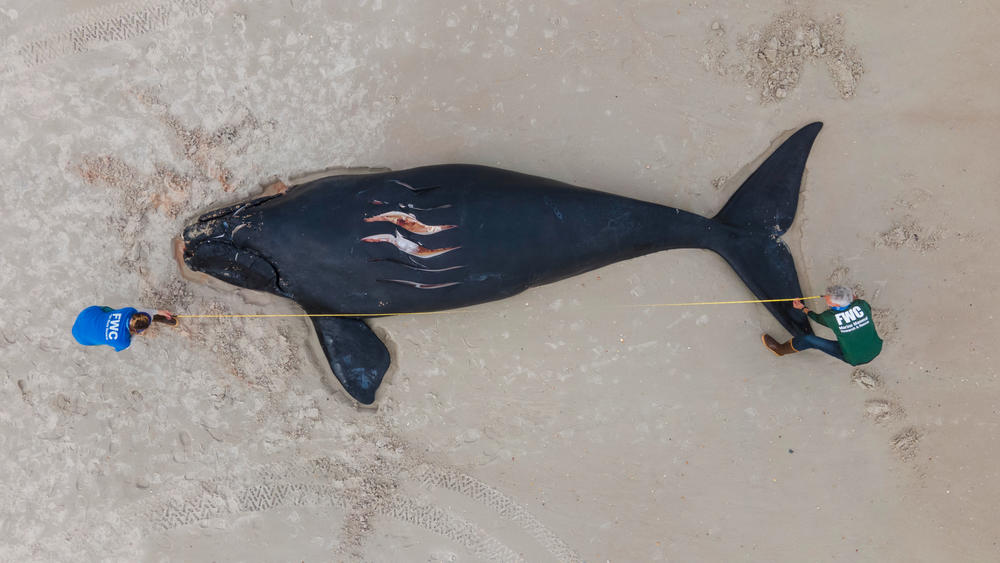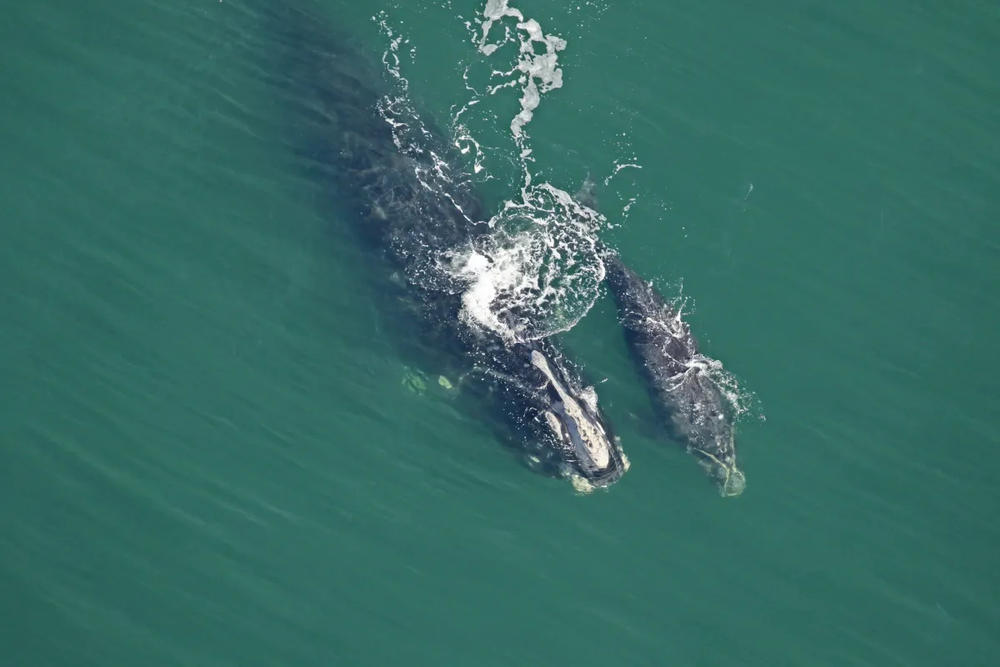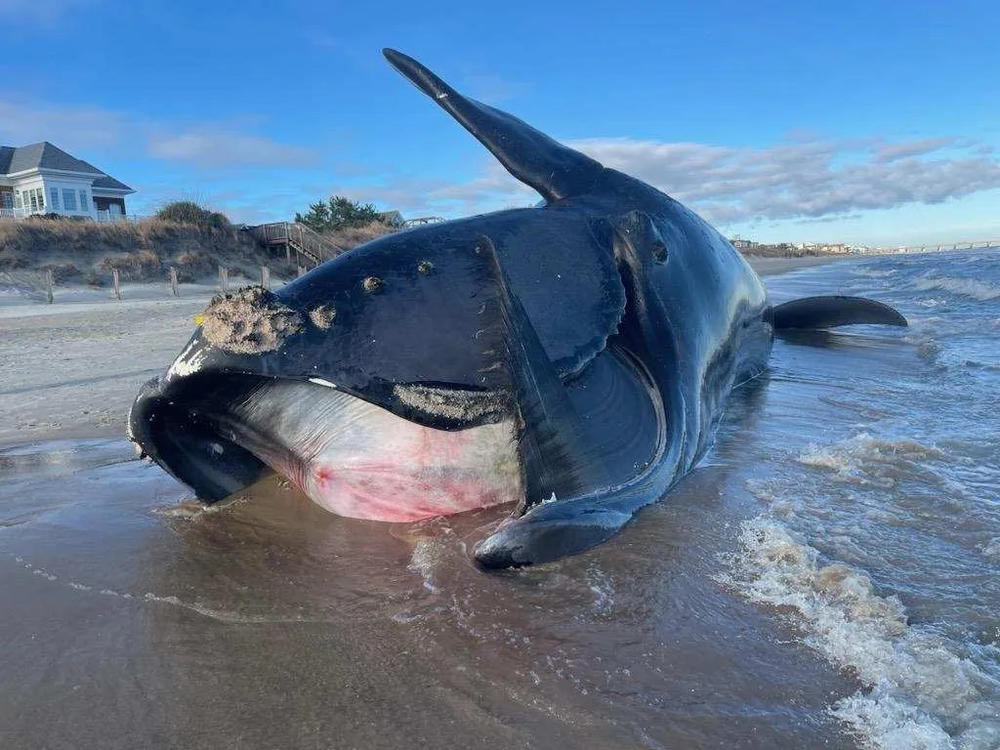
Caption
Approximately 22-foot-long dead right whale calf. The one-month old, male calf of Catalog #3230 beached on Anastasia State Park in St. Augustine, FL on February 13, 2021. The calf had injuries consistent with a vessel strike, including fresh propeller cuts on its back and head, broken ribs, and bruising.
Credit: FWC/Tucker Joenz, NOAA Fisheries permit #18786



